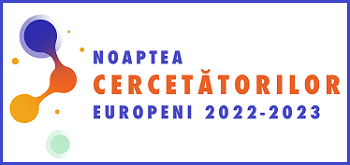| Conţinutul numărului revistei |
| Articolul precedent |
| Articolul urmator |
 291 291 0 0 |
 SM ISO690:2012 SM ISO690:2012CROPOTOVA, Janna, TYLEWICZ, Urszula, DELLAROSA, Nicolo, LAGHI, Luca, ROMANI, Santina, DALLA ROSA, Marco. Effect of freezing on microstructure and degree of syneresis in differently formulated fruit fillings. In: Food Chemistry, 2016, vol. 195, pp. 71-78. ISSN 0308-8146. DOI: https://doi.org/10.1016/j.foodchem.2015.03.056 |
| EXPORT metadate: Google Scholar Crossref CERIF DataCite Dublin Core |
  Food Chemistry Food Chemistry |
||||||
| Volumul 195 / 2016 / ISSN 0308-8146 | ||||||
|
||||||
| DOI:https://doi.org/10.1016/j.foodchem.2015.03.056 | ||||||
| Pag. 71-78 | ||||||
|
||||||
| Rezumat | ||||||
This study describes the syneresis and its effect on microstructure in fruit fillings within a wide range of the total soluble solids content and with or without hydrocolloids upon freezing. Linear models showed the relevance of the addition of pectin and gellan gum to fillings to prevent syneresis, increasing the water-holding capacity especially after freezing. Microstructural experiments by means of NMR spin-spin relaxometry combined with fluorescence microscopy allowed to observe that the continuous hydrocolloid gel, containing the dispersed solution of native fruit parts with the addition of inulin and sugars, changed its structure/distribution according to the amount of each ingredient and due to the freezing process. Relaxometry results confirmed that hydrocolloids strength was correlated (R2 > 0.92) with water-holding capacity, due to a relationship between the signal given by the water chemically exchanging with biopolymers, and the changes in the degree of syneresis. |
||||||
| Cuvinte-cheie Fluorescence microscope, fruit filling, Hydrocolloid, NMR, Water distribution |
||||||
|
DataCite XML Export
<?xml version='1.0' encoding='utf-8'?> <resource xmlns:xsi='http://www.w3.org/2001/XMLSchema-instance' xmlns='http://datacite.org/schema/kernel-3' xsi:schemaLocation='http://datacite.org/schema/kernel-3 http://schema.datacite.org/meta/kernel-3/metadata.xsd'> <identifier identifierType='DOI'>10.1016/j.foodchem.2015.03.056</identifier> <creators> <creator> <creatorName>Cropotova, J.</creatorName> <affiliation>Institutul Ştiinţifico-Practic de Horticultură şi Tehnologii Alimentare, Moldova, Republica</affiliation> </creator> <creator> <creatorName>Tylewicz, U.</creatorName> <affiliation>Universitatea din Bologna, Italia</affiliation> </creator> <creator> <creatorName>Dellarosa, N.</creatorName> <affiliation>Universitatea din Bologna, Italia</affiliation> </creator> <creator> <creatorName>Laghi, L.</creatorName> <affiliation>Universitatea din Bologna, Italia</affiliation> </creator> <creator> <creatorName>Romani, S.</creatorName> <affiliation>Universitatea din Bologna, Italia</affiliation> </creator> <creator> <creatorName>Dalla Rosa, M.</creatorName> <affiliation>Universitatea din Bologna, Italia</affiliation> </creator> </creators> <titles> <title xml:lang='en'>Effect of freezing on microstructure and degree of syneresis in differently formulated fruit fillings</title> </titles> <publisher>Instrumentul Bibliometric National</publisher> <publicationYear>2016</publicationYear> <relatedIdentifier relatedIdentifierType='ISSN' relationType='IsPartOf'>0308-8146</relatedIdentifier> <subjects> <subject>Fluorescence microscope</subject> <subject>fruit filling</subject> <subject>Hydrocolloid</subject> <subject>NMR</subject> <subject>Water distribution</subject> </subjects> <dates> <date dateType='Issued'>2016-03-15</date> </dates> <resourceType resourceTypeGeneral='Text'>Journal article</resourceType> <descriptions> <description xml:lang='en' descriptionType='Abstract'><p>This study describes the syneresis and its effect on microstructure in fruit fillings within a wide range of the total soluble solids content and with or without hydrocolloids upon freezing. Linear models showed the relevance of the addition of pectin and gellan gum to fillings to prevent syneresis, increasing the water-holding capacity especially after freezing. Microstructural experiments by means of NMR spin-spin relaxometry combined with fluorescence microscopy allowed to observe that the continuous hydrocolloid gel, containing the dispersed solution of native fruit parts with the addition of inulin and sugars, changed its structure/distribution according to the amount of each ingredient and due to the freezing process. Relaxometry results confirmed that hydrocolloids strength was correlated (R<sup>2</sup> > 0.92) with water-holding capacity, due to a relationship between the signal given by the water chemically exchanging with biopolymers, and the changes in the degree of syneresis. </p></description> </descriptions> <formats> <format>uri</format> </formats> </resource>












